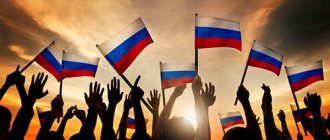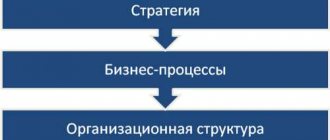Kinds
Human motivations can be internal or external. Motivation is the name given to the internal urge to take some action through appealing to a person’s feelings. On the contrary, if the motivation is not based on feelings, but uses a reasonable and rational approach to solving a problem, this is already a belief.
Accordingly, external motivation is classified in the same way. Nature's call is the ability to evoke an external motivational force by appealing to the senses. But if there is an appeal to reason - a call.
Motivation in a person arises along with a positive desire to accomplish something. If the action is caused by pain, fear or any other negative emotion, this is already called negative motivation.
Several reasons can motivate a person to action at the same time. Obviously, no matter what, the most important thing to you is the end result. But how to achieve it?
We recommend: How to develop willpower?
To motivate a person to action, it is necessary to use the main components - motor skills, consciousness and subconscious of a person. It is obvious that with a one-time impact on these three factors you are unlikely to achieve the desired result, so such actions must be of a definitely systematic nature.
A person can encourage another to action not only by some actions, but also by words and glances. Obviously, to do this you need to develop certain skills. Since ancient times, the magical power of words has been noted among different peoples of the world.
But not only people - animals can also motivate a person to a certain action. Thus, there are known cases when some types of snakes force a person to approach them with their gaze.
Motivation is determined by the need, passion and desires of a person. The motivation for activity can directly depend on genetic predisposition - so to speak, motivation genes. Their influence is represented by several main factors transmitted from generation to generation, namely:
- Genes strive for the initial restoration of the original state; all motivating forces are directed towards this.
- Motivation is divided into two completely opposite directions, vectors: the first is more humane, and the second is its complete opposite.
It is precisely because of the dual structure of human aspirations and needs that a certain tension in motivations appears. The level of contrast between them directly depends on the differences between drive genes.
We recommend: Optimism is
The dynamics of the implementation of actions caused by certain motives also depends on these factors. From here follows a person’s understanding that his fate, his future, predetermined by himself, and not imposed from the outside, depends on his motives.
Personnel management in enterprises and organizations
7.1. Planning, selection and formation of personnel
The activities of any organization are the collective work of many people to achieve their goals. Any collective work needs management - planning, organization, motivation, coordination and control of the activities of individual teams and performers.
Therefore, personnel management is a central part, the most important management function in any organization. People are the basis of any organization, they are the creators and driving force of any organizational system, they are the ones who transform the world and make it more perfect.
You can develop the most scientifically sound and effective solutions, you can introduce unique technologies, use the latest technology, develop the most advanced organizational schemes - and still not achieve success. Because the most complex, subjective factor - the human one - will not be taken into account.
Personnel management from the point of view of a specific manager is the management of the employees of a department: planning, organizing and coordinating their activities, activating employees, monitoring the implementation of assigned tasks.
Surveys of a large number of senior and middle managers both in Russia and abroad have shown that managers spend up to 80% of their precious, highly paid time on management—interacting with employees. Moreover, the lower the level of management, the larger the part in the structure of the manager’s working time is occupied by management (Fig. 7.1).
Rice.
7.1. Structure of management activities
Personnel Management
— the process of targeted influence (management) on personnel to achieve the goals of the organization.
Personnel management in an organization must include a certain set of functional blocks. The content of the tasks of each block is given in Table. 7.1.
Management
is the management of people's behavior. Human behavior in the process of creating and implementing a project can be represented in two interrelated models:
- from the perspective of the concept of “economic man” - a rational person who in his activities is guided by norms, principles, rules, aims to achieve the goals of the organization and strives to optimize the performance of production and economic activities. From this position, a person acts as the main resource of the organization, a cog in the mechanism of its functioning (model 1);
- from the perspective of the concept of “social man” - a personality, an individual with creative abilities and an emotional and sensory perception of life, a person who does not always act rationally, who has his own goals, values, interests, needs and motives and is guided by them in his activities. Participation in the organization is considered by him from the point of view of the coincidence of his own goals and interests with the goals and interests of the organization. For a social person, work is an opportunity to satisfy one’s needs (model 2).
Table 7.1. Composition of functional blocks for personnel management in an organization
| Function block | Contents of tasks |
| Determining staffing needs | Planning for quality staffing needs |
| Methods for calculating quantity requirements | |
| Planning of quantitative personnel requirements | |
| Providing staff | Personnel Marketing |
| Search and attraction of personnel | |
| Personnel selection and business assessment | |
| Hiring | |
| Staff development | Personnel career planning and development |
| Organization and conduct of training | |
| Use of personnel | Distribution of duties, rights and responsibilities of personnel |
| Personnel adaptation | |
| Organization of personnel work | |
| Ensuring safety and working conditions | |
| Release of personnel | |
| Motivation of personnel activities | Determining the content and process of personnel motivation in the organization |
| Conflict Management | |
| Use of monetary incentive systems: wages, staff participation in profits and capital | |
| The use of non-monetary incentive systems: group work organization, informal communications, style and methods of work and leadership, workplace regulation, etc. | |
| Ensuring HR management processes | Legal regulation of labor relations |
| Personnel policy | |
| Personnel accounting and statistics | |
| Information support for personnel management | |
| Organizational culture |
First model
includes a person as an element of the “organization” system (“input”, resource of the system) in the process of information and material exchange between it and the environment, as well as within itself - with other elements of the organization (goals, structure, other resources, organizational culture, etc. ).
The “output” of the system is obtained as a result of purposeful actions of people, certain behavior - the “transformation” function.
Second model
presupposes man at its center. The organization as a system for realizing its goals influences employees (a set of incentives). According to internal goals, needs, motives, individual reactions to influence, a person carries out certain activities that bring results. These results are evaluated by the organizational environment, which influences further impacts. In this case, the results of activity are considered as: a) results for oneself - what a person received in response to stimulating influences; b) results for the organization - what he did to achieve his goals.
Personnel planning
acts as the initial function of the personnel management cycle, the most important element of the organization’s personnel policy, expresses its objectives and strategy, and is the basis for achieving its goals.
The purpose of personnel planning is to provide the organization with the necessary personnel and determine the inevitable costs.
Personnel planning is an integral part of organizational planning and must be carried out in accordance with other plans of the organization. The preliminary stage of personnel planning is the identification of personnel needs and possible sources and methods of meeting these needs.
Stages of personnel planning.
- Development of personnel strategy
. The formation of an organization’s personnel strategy is influenced by the following factors: goals and development strategy of the organization, organizational structure and criteria for the effectiveness of the personnel management system, organizational constraints (finance, time, material and technical resources, social base, etc.), information support systems of the organization, relationships to senior management personnel management. Thus, the personnel strategy determines the attitude of management towards the organization’s personnel as a whole, the accepted principles and methods of organizing work, evaluation, motivation of personnel, their working conditions, and the creation of prerequisites for personnel development. - Determining the goals and objectives
of personnel management. The goals and objectives of personnel management are the basis for the development of specific personnel management activities to meet the needs of the organization, department teams and each employee. - Analysis human resources potential
. Based on the data of the HR department and personal questionnaires of employees, the composition of the personnel, its structure (qualifications, gender, age, position, professional, educational, etc.) is determined, the level of staff turnover, loss of time due to illness and as a result of ineffective labor organization, and the working hours are determined ( duration, shifts, vacation), size and structure of wages, availability of social benefits. - Planning the need for quantitative and qualitative
personnel. Based on the goals and plans of the organization, analysis of personnel potential, the composition of personnel for all categories of personnel required at different levels of production and management is planned, and a personnel plan is drawn up. The principle of alternativeness in personnel planning is manifested in the development of alternative options for the personnel plan and the adoption of the most acceptable option.
Quality need
in personnel reflects the formal requirements for personnel: qualifications, education, experience of employees, etc. - and can be determined through the consistent development and analysis of organizational documents: goals and organizational management structure, staffing schedule, regulations on organizational units, job descriptions.
To determine the quantity
required personnel, various methods are used to calculate the number of employees for a certain period of time. The number of working personnel is calculated based on the calculation of the volume of work and its labor intensity. Methods for calculating the number of management personnel are based on standards for the number of management personnel and analogy methods.
Providing the organization with personnel
Personnel marketing involves analysis of the labor market, sources and methods of attracting personnel.
The saturation of the market with the necessary categories of personnel is inversely proportional to the personnel selection coefficient, calculated as the ratio of the number of vacancies to the number of applicants. As labor supply increases, the selection coefficient decreases. The attraction, selection and hiring of personnel is influenced by many factors in the external environment and internal environment of the project (Fig. 7.2).
The main purpose of selection is to hire workers with the required professional and personal qualities.
Rice. 7.2. Factors influencing the attraction, selection and hiring of personnel
Motivation to action
In the event that external motivation ceases to act properly on a person, it is necessary to resort to independent motivation. In this case, a person draws motivating energy not from external sources, but from internal resources.
Internal motivation is an almost inexhaustible source of motivational energy for a person. For example, everyone has had cases when nothing works out, it collapses, things go very badly, and the only desire left is to give up everything. But a person gathers all his strength into a single impulse, so to speak, into a fist, and finds the energy to act further.
We recommend: What is responsibility?
Self-hypnosis also plays a special role in this - a person’s way of influencing his own consciousness and psyche, imposing obviously unusual patterns of behavior, etc. The easiest way is to create a list for such purposes, consisting of desired attitudes and areas of motivation. Author: Anna Vorobyova
Interpretation
What is motivation? The term comes from the verb “to induce.” At first, the term denoted an action aimed at implementing any plans. Currently, the interpretation of the word has changed. There are several basic meanings of the term in the dictionary:
- an action close to the verb “to induce”;
- desire or intention to do something;
- attraction or desire to accomplish something.
The use of a word is related to its lexical meaning. Currently, the term “drive” is widely used in applied psychology. Some phrases in which the word is used have become common nouns (not for friendly reasons, don't trust sudden impulses, with the best of intentions, etc.).










